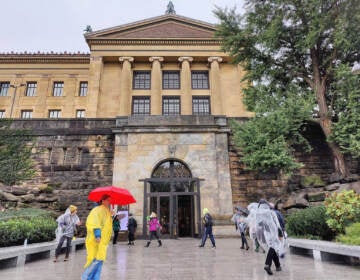After 45 years of science-based art, Esther Klein Gallery winds down
Since 1976, the Esther Klein Gallery has run the art program of the University City Science Center. It will reinvent itself in a new space.
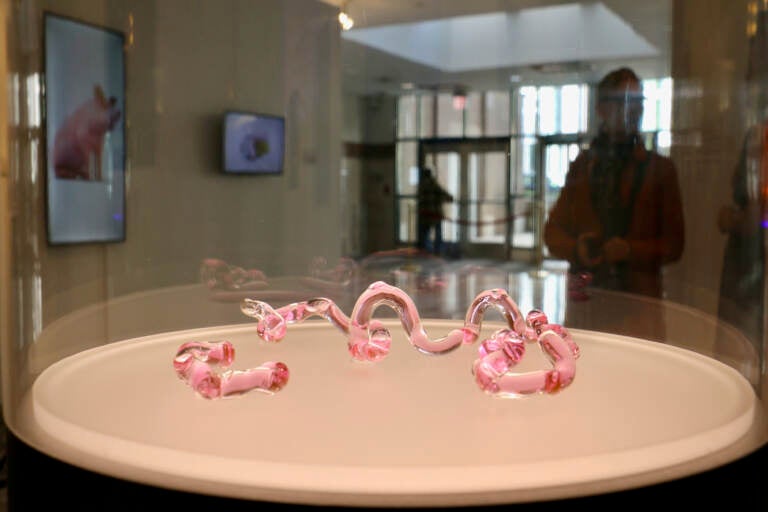
Glass vials containing a virus that would stimulate feelings of love and bonding are part of Heather Dewey-Hagborg's "Lovesick: the Transfection" at the Esther Klein Gallery. (Emma Lee/WHYY)
People going to work in the 3600 Market Street building in University City may encounter any number of unusual things in the lobby.
There might be abstract paintings based on the rate of community COVID infections, or an artist’s exploration of the gut microbiome. The space had been an early adopter of augmented reality. The air in the lobby was once infused with experimental scents.
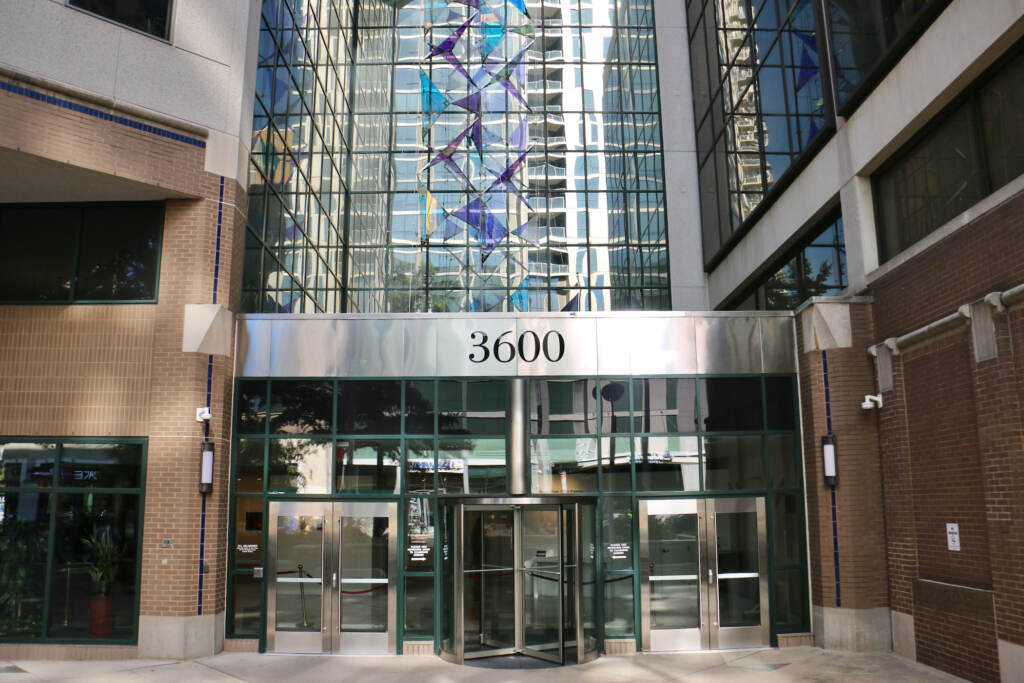
For decades, the corner of the lobby has served as the home of the Esther Klein Gallery, featuring these kinds of science-based artwork.
Right now, the lobby features pigs. Artist Heather Dewey-Hagborg has created an operatic documentary about xenotransplantation, exploring the ethics of genetically engineering pigs so their hearts can be harvested for people.
“It’s like a new strain of pig,” says Dewey-Hagborg in the film’s voiceover narration. “It’s called Pig 3.0.”
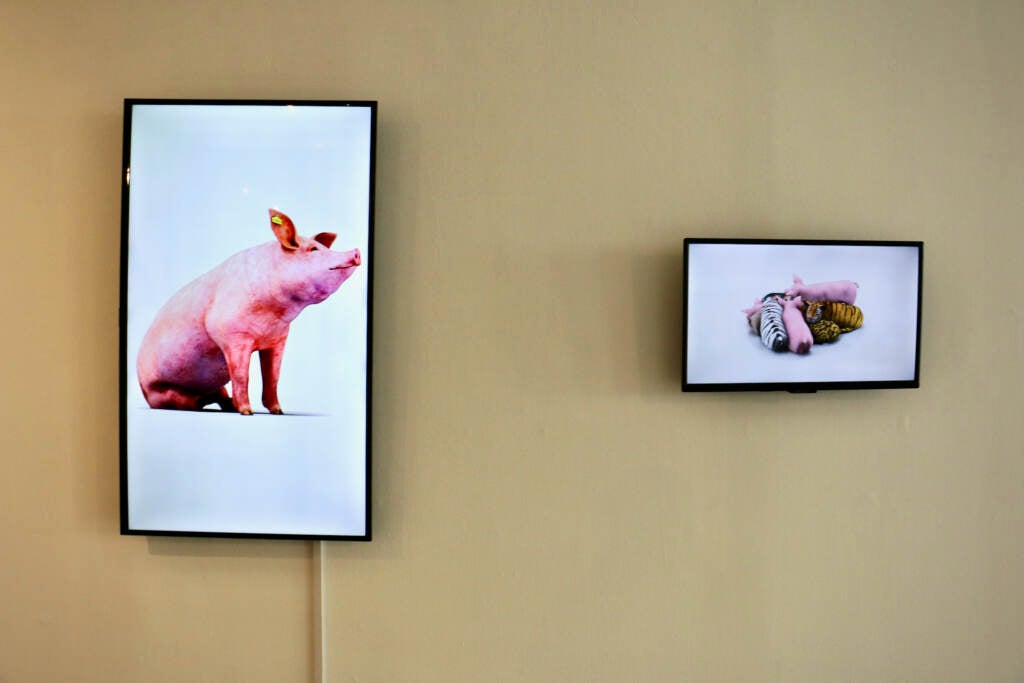
Her lines are repeated and augmented by opera singers. The artist asked composer Bethany Barrett to set the film to music. Selected phrases culled from interviews with scientists serve as the libretto.
“Hybrid: an Interspecies Opera” is having its premiere at the Esther Klein Gallery. The approximately 20-minute film is screening on a loop inside a darkened room built into the lobby of 3600 Market. It can be viewed anytime during gallery hours, which are 9 a.m. to 5 p.m. Mondays through Saturdays.
It is one part of a small retrospective of Dewey-Hagborg’s work, “Closer Than Your Family,” which also includes a love virus that can replicate the hormonal chemicals generated by being in love (an actual engineered virus, but never tested on a person), and 3D printings of people’s faces based on the genetic information in their DNA.
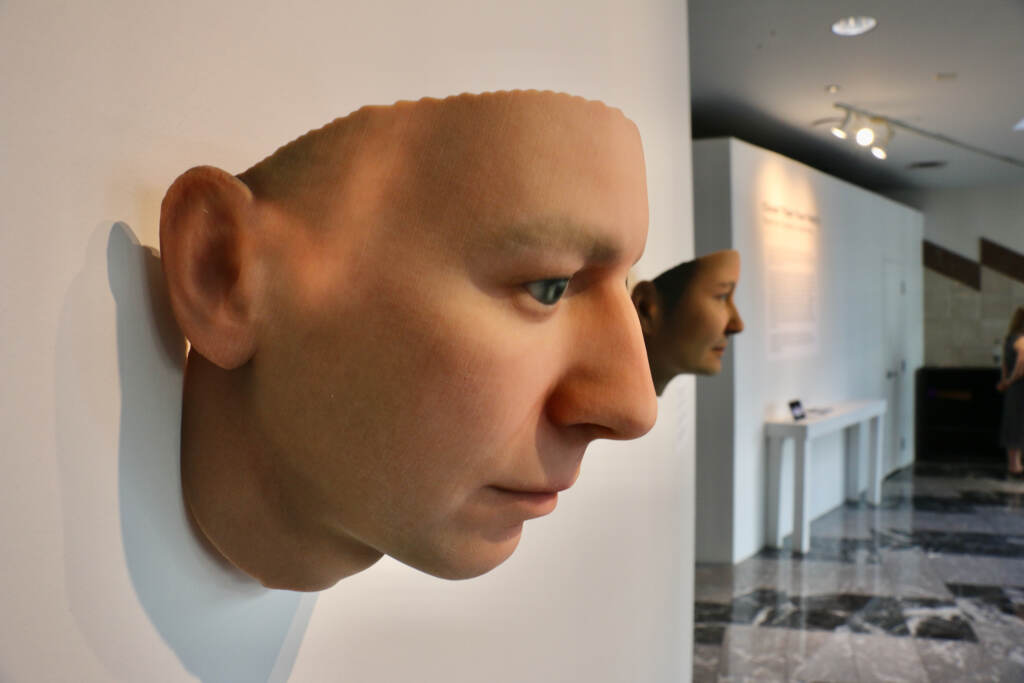
“Closer Than Your Family” is the final exhibition in 3600 Market. After the show closes Dec. 16, the Esther Klein Gallery will be gone.
Since 1976, the gallery, named after its original benefactor and founding director Esther Klein, has driven the art programs of the University City Science Center, a hub for science innovation and entrepreneurship spread across several buildings. The gallery moved into 3600 Market shortly after it was built in 1989.
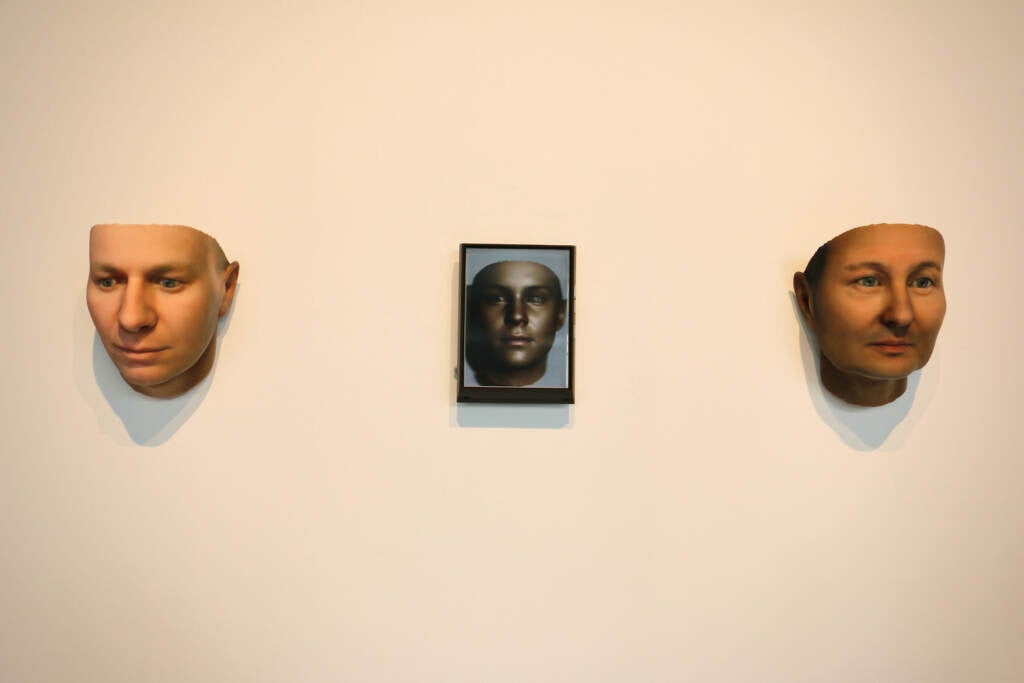
Curator Angela McQuillan said the art program of the Science Center will re-establish itself in 2024 under a different, still undetermined name, across the street at 3675 Market Street, a newer building finished in 2018 with a larger ground-floor community space called the Quorum.
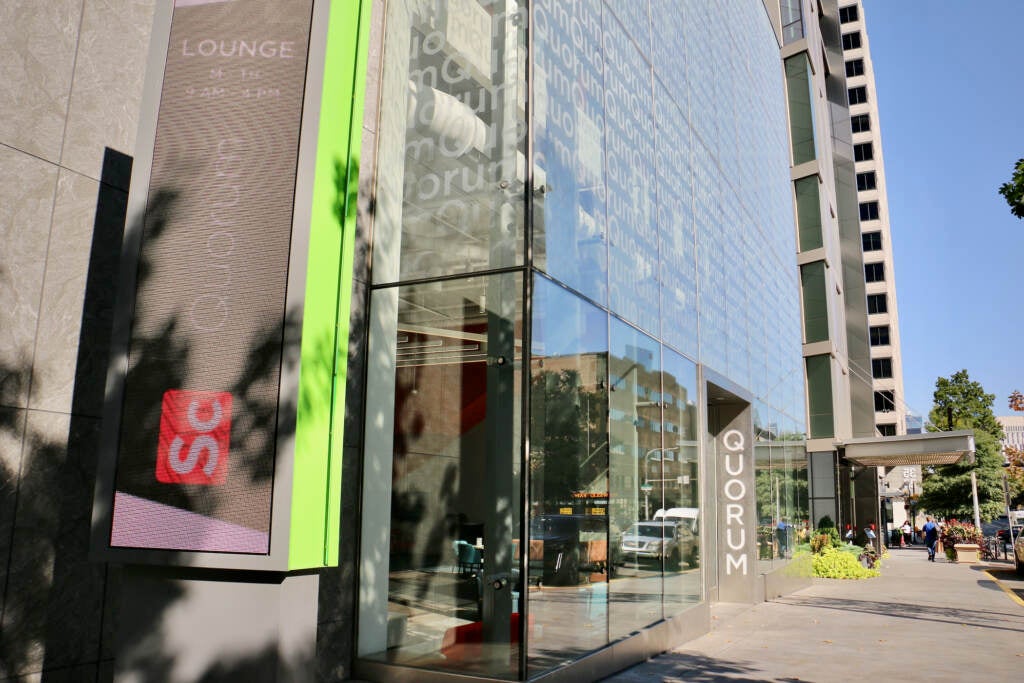
“They have this big lounge in there, and they have a coffee shop and free wi-fi and everything,” McQuillan said. “People have migrated over there and less people come through this space. We want to capitalize on the amount of people going through that space, to have more people view the work.”
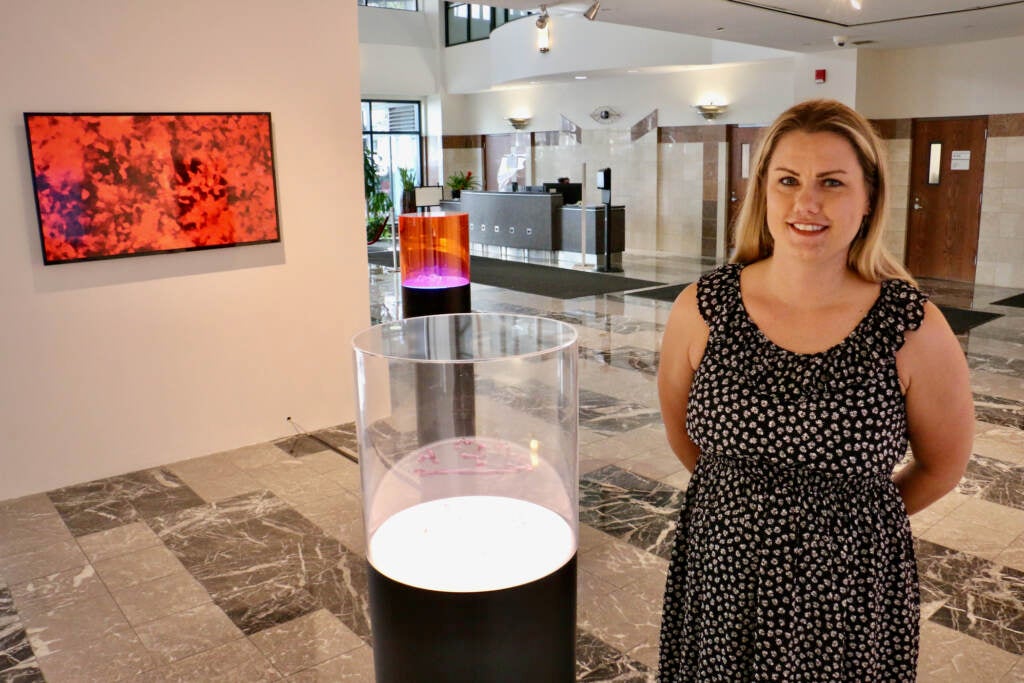
The Esther Klein Gallery has championed science-based art for more than 45 years. In its early days, the gallery featured artwork that tended to revolve around robotics and technology. When McQuillan became curator nine years ago, she steered the gallery toward art involving biology and bioethics.
The Science Center also has an artist residency program, putting artists into the laboratories of its tenant scientists to inspire new work. That is where Dewey-Hagborg developed the love virus in 2018 with scientists in the lab of Integral Molecular.
In the new iteration of the gallery, McQuillan said the scope of work will likely expand beyond science and into issues of public health. Its first exhibition, “Futures Without Guns,” will feature work by five artists exploring the public health impacts of guns and gun laws.
“The art will still somewhat be focused on science, because it’s the Science Center, but there’s a lot of health equity issues that they want to focus on,” she said. “We’re open to ideas. It’s not strictly science. Anything that the community really wants to engage with, I think that’s what we’re interested in.”
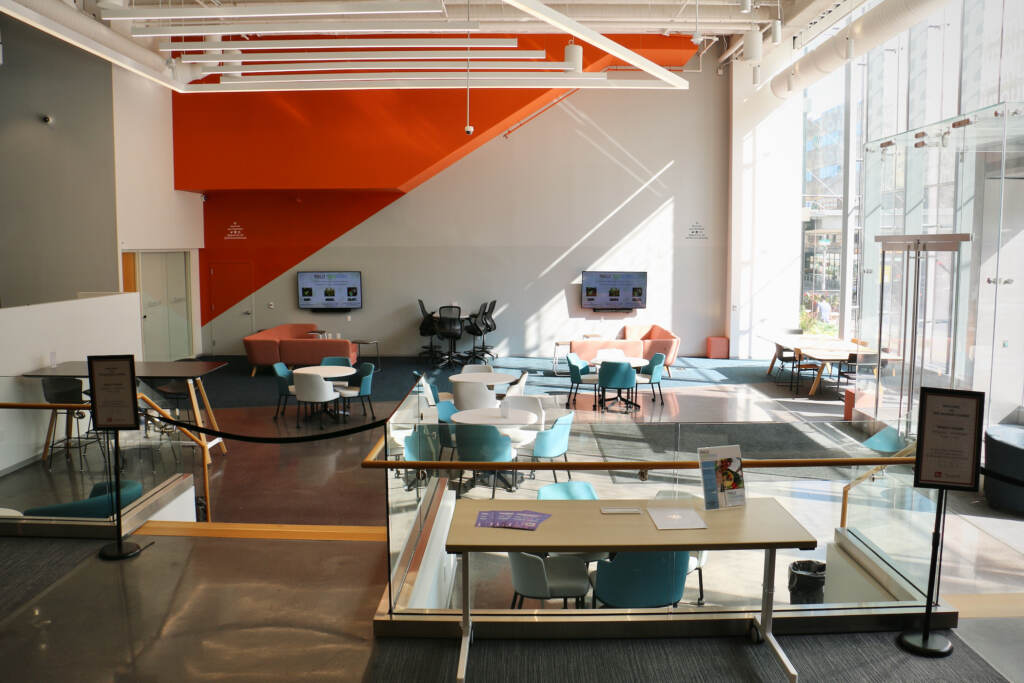
The new exhibition space will not have the kind of white-cube room typical of other art galleries. As in the current space in the 3600 Market lobby, the artwork will compete for attention in a lounge designed for other activities, such as eating, web browsing, reading, and meeting with people.
That’s how McQuillan likes it.
“When we install shows, there are people coming in and out, going to work, witnessing the whole process. But it’s been awesome because there’s a lot of questions that we get, and people really are engaged with the work,” she said. “I think it’s amazing that people can just walk in and stumble upon an art show.”

Get daily updates from WHYY News!
WHYY is your source for fact-based, in-depth journalism and information. As a nonprofit organization, we rely on financial support from readers like you. Please give today.




